The Access to Alaska Native Collections (AANC) program responds to the needs of the Alaska Native artist community for access to Alaska Native collections in museums by supporting research visits to museum collections storage in Alaska. As such, Alaska Native artists were invited to propose a visit to a participating museum’s collection that has a clear benefit to the artist and the development of their work.
The grant covered travel costs for the collections visit—flights, ferries, mileage, per diem, lodging, parking, taxis, and family care needs—up to $2,500. There were six grants available.
The grant program is made possible with funding from The CIRI Foundation’s A Journey to What Matters: Increased Alaska Native Art & Culture (JWM) funding and is administered by Museums Alaska on behalf of the Foundation. All inquiries must be directed to the Museums Alaska Director.
Eligibility was limited to Alaska Native artists located in the state of Alaska.
First Round 2023 AANC Grantees:
 Erin Ggaadimits Ivalu Gingrich was awarded an Access to Alaska Native Collections grant to visit the University of Alaska Museum of the North .
Erin Ggaadimits Ivalu Gingrich was awarded an Access to Alaska Native Collections grant to visit the University of Alaska Museum of the North .
Erin (Koyukon Athabascan and Inupiaq) is a carver, an interdisciplinary artist, and is expanding her practice to include other artforms and more complex narratives. She is currently pursuing her MFA, and the visit will allow her to engage in museum collections to ground her work in that of the Indigenous artists that have come before her.
Erin hopes to visit a variety of collections including historical cultural belongings, photographs, carved objects, animal representations and animal specimens that are culturally connected to her many homelands and Indigenous heritage.
You can learn more about Erin and her work at https://ggaadimitsivalu.com.
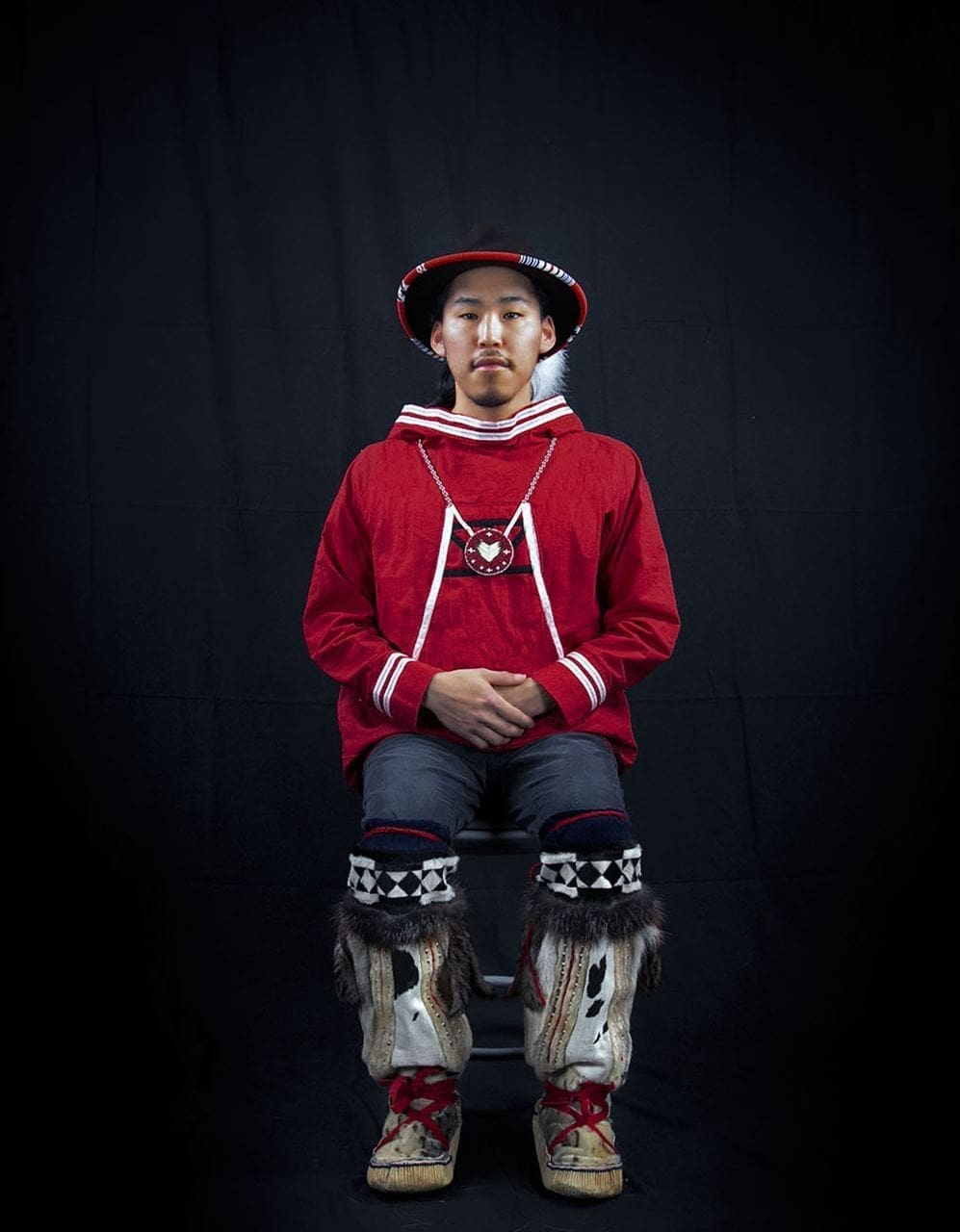 Golga Oscar was awarded an Access to Alaska Native Collections grant to visit the Anchorage Museum! During his visit, he intends to explore different forms of the Yup’ik collection ranging from headwear to footwear and capture them through the lens of photography.
Golga Oscar was awarded an Access to Alaska Native Collections grant to visit the Anchorage Museum! During his visit, he intends to explore different forms of the Yup’ik collection ranging from headwear to footwear and capture them through the lens of photography.
A self-taught artist with a huge passion for his culture and tradition, Golga enjoys revitalizing traditional designs with careful observation. Through revitalization, he observes the material, technique, and significance behind the clothing with a goal of bringing back what was once discontinued since the impact of westernization. Golga’s goals are to pursue cultural awareness teaching and get into the fashion industry. He aims to showcase the Yup’ik cultural art and bring recognition of Yup’ik clothing and traditions to the “American” mainstream.
Follow Golga on Instagram to learn more: https://www.instagram.com/quki92/?hl=en
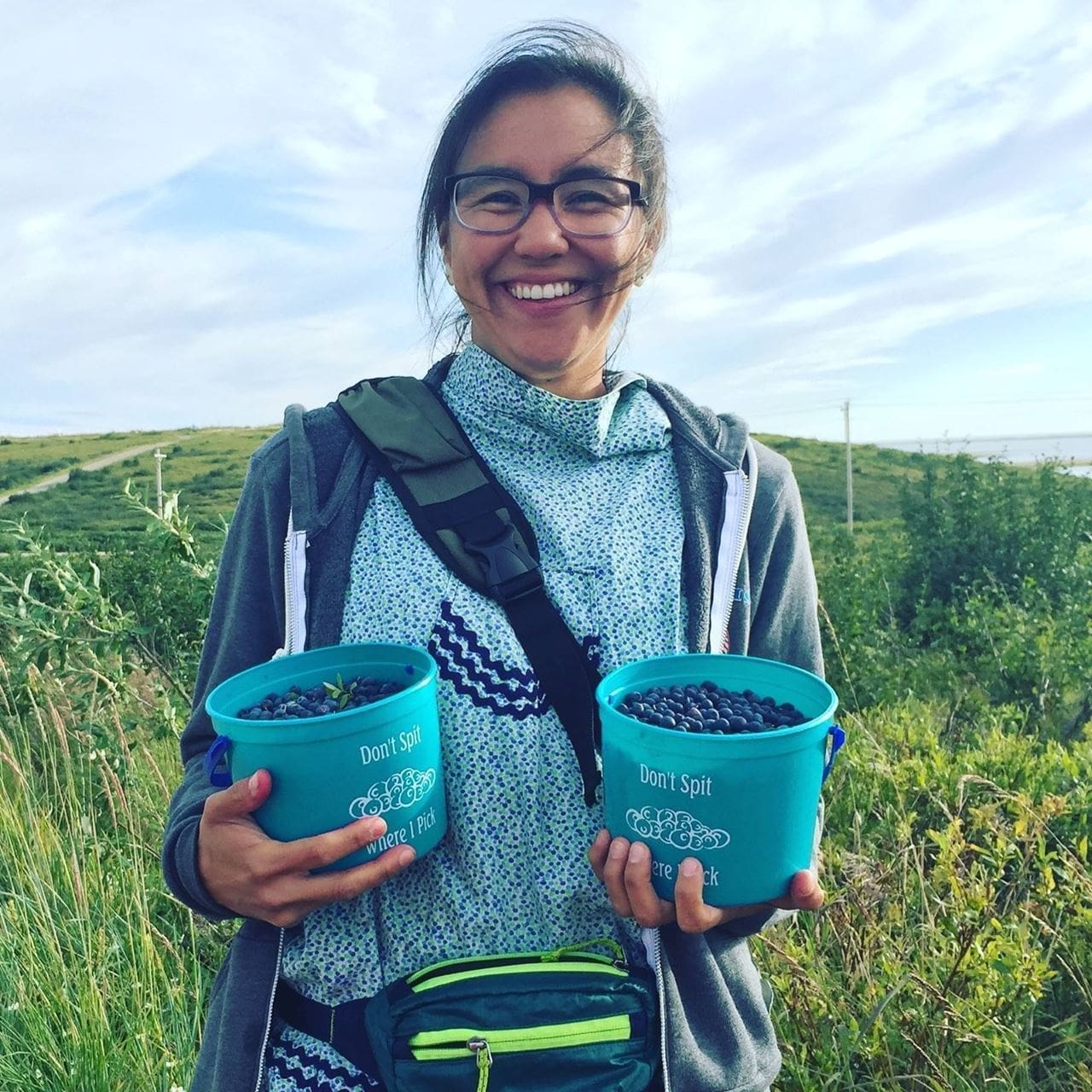 Nicolette Corbett received an Access to Alaska Native Collections grant to visit the Alaska Native Heritage Center where she will be studying the piluguk/kameskak collection from the Yukon Kuskokwim Delta Region!
Nicolette Corbett received an Access to Alaska Native Collections grant to visit the Alaska Native Heritage Center where she will be studying the piluguk/kameskak collection from the Yukon Kuskokwim Delta Region!
Since Nikki started her sewing business, Sew Yup’ik, in the summer of 2015, it has taken off. In addition to creating and selling qaspeqs, bags of various sizes, and other small sewing pieces, she has taken on a new role teaching qaspeq workshops across the state of Alaska.
In the last year, her focus has been to work on skin sewing projects and especially those that are of the lost art, like piluguks/kameksaks (hard sole bottom shoes). Creating piluguks is becoming a lost art, and Nikki is hoping to learn it so that she can share that knowledge with others and keep Yup’ik traditions alive.
Learn more about Nikki and her work at https://sewyupik.com.
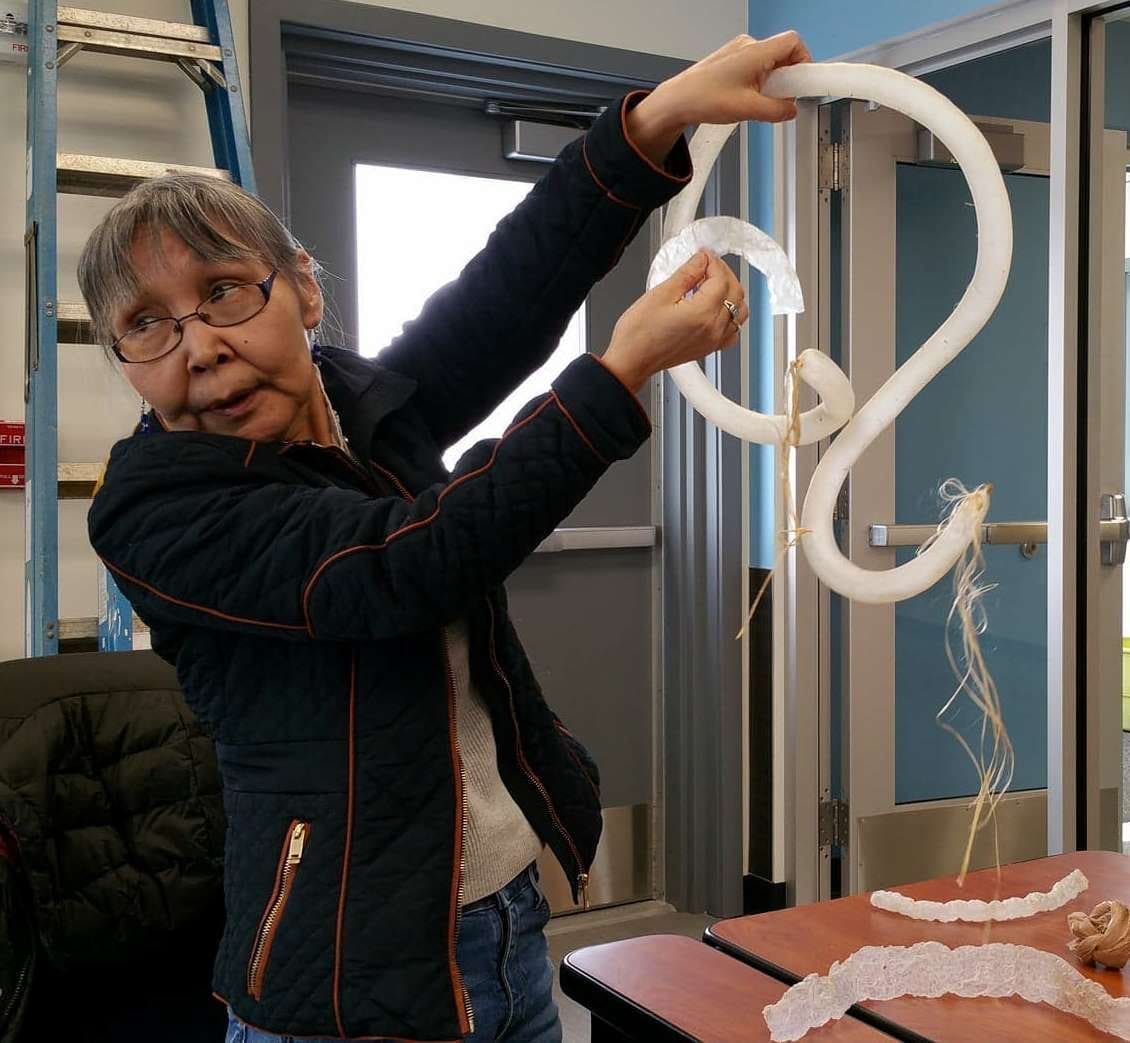 Raktenga Elaine Kingeekuk was awarded a grant to visit the Alaska State Museum to collaborate with conservator Ellen Carrlee on gut conservation and care. Elaine will also spend time in collections storage freely opening cabinets and drawers to see and handle dolls, sewing tools, jewelry, toys, footwear, garments, and any other items in the museum collection that may promote her artistic and teaching goals.
Raktenga Elaine Kingeekuk was awarded a grant to visit the Alaska State Museum to collaborate with conservator Ellen Carrlee on gut conservation and care. Elaine will also spend time in collections storage freely opening cabinets and drawers to see and handle dolls, sewing tools, jewelry, toys, footwear, garments, and any other items in the museum collection that may promote her artistic and teaching goals.
Elaine has been sewing dolls, baskets, clothing, boots, toys, and other small items since her childhood in Savoonga on St. Lawrence Island. She learned sewing and its cultural values from her mother (Ruthelle) and grandmother. In addition to teaching within her community, Elaine has been working with scholars and museums for nearly 20 years.
While she is in Juneau, Elaine is considering hosting a public program at the museum, and getting the word out about a teaching studio she would like to open in Savoonga. Elaine will also take time to connect with old friends and the land through berry picking and other cultural activities.
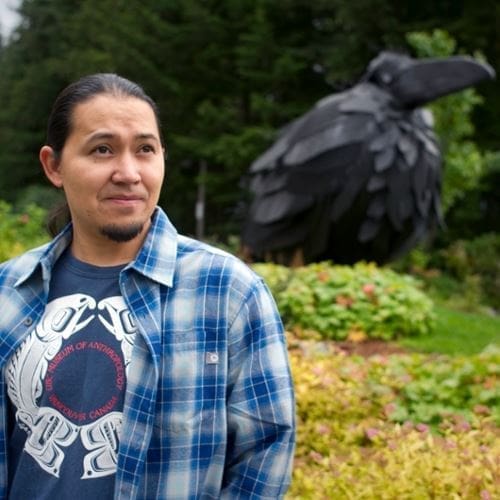 X̱’unei Lance Twitchell was awarded a grant to visit the Totem Heritage Center and Tongass Historical Museum in Ketchikan to study with Nathan Jackson while continuing to document his life and work through video and photo.
X̱’unei Lance Twitchell was awarded a grant to visit the Totem Heritage Center and Tongass Historical Museum in Ketchikan to study with Nathan Jackson while continuing to document his life and work through video and photo.
He will work closely with staff of the Totem Heritage Center and the Tongass Historical Museum to organize visits with the intention of documenting both the work and Nathan Jackson’s comments on the artwork. He will also consult with Nathan Jackson on X̱’unei’s own artwork and future projects.
X̱ʼunei will also photograph the collections in the Totem Heritage Center and the Tongass Historical Museum for both individual artistic study and teaching at the University of Alaska Southeast and in workshops with the Goldbelt Heritage Foundation and Sealaska Heritage Institute.
These visits will greatly increase X̱ʼunei’s ability to continue to grow as a visual artist and to produce new works in design, sculpture, fashion, regalia, and more.
Learn more about X̱’unei Twitchell at https://troubledraven.com.
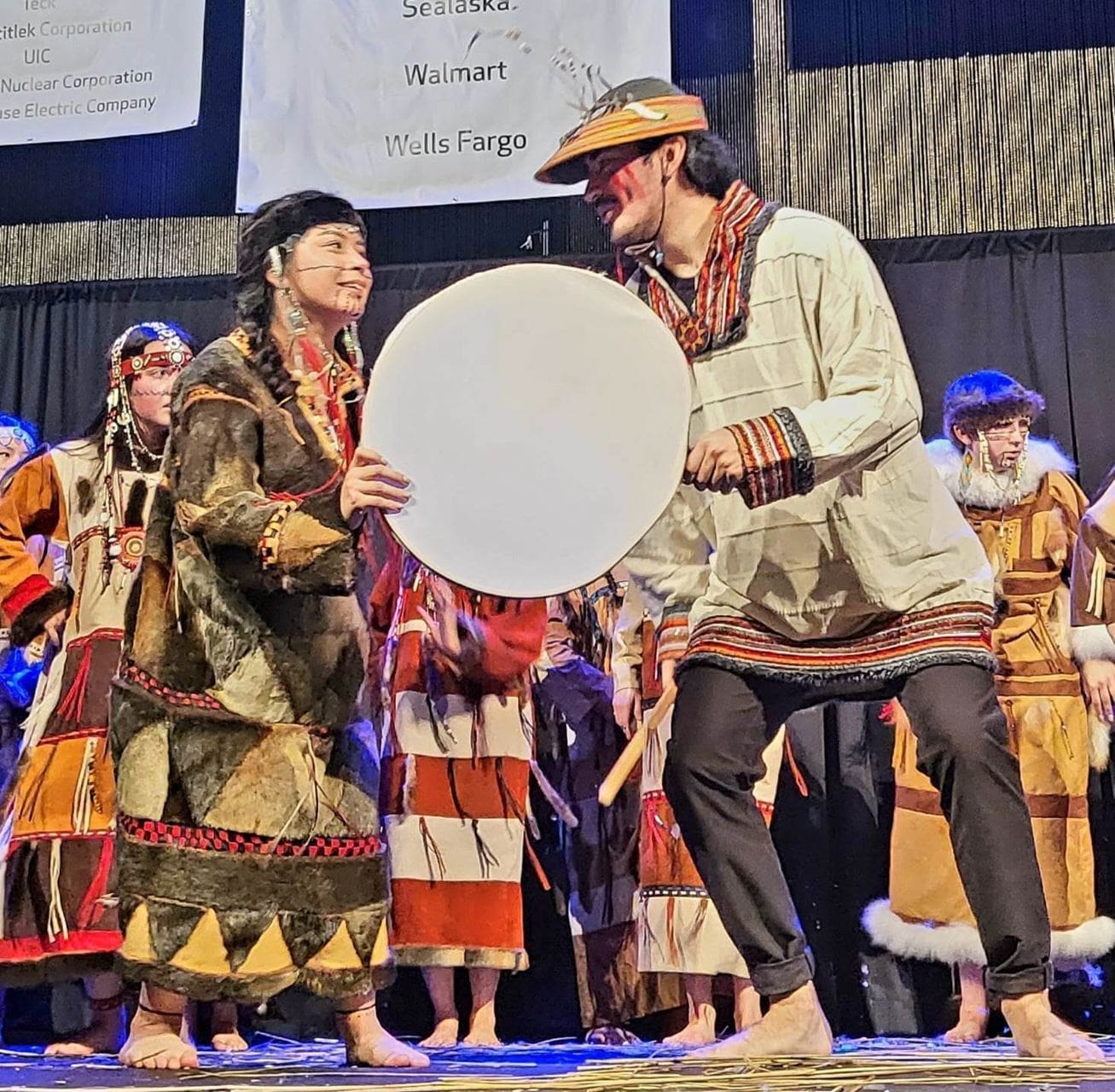 Qaadax̂ Chloe Bourdukofsky and Carter Price were awarded an Access to Alaska Native Collections grant to visit the Museum of the Aleutians! At the museum, they will visit the archives and pieces that include their family history and art.
Qaadax̂ Chloe Bourdukofsky and Carter Price were awarded an Access to Alaska Native Collections grant to visit the Museum of the Aleutians! At the museum, they will visit the archives and pieces that include their family history and art.
Qaadax̂ Chloe Bourdukofsky was culturally raised by her grandparents and great grandma who found it very important to teach her about Unangax̂ practices and values. They taught her how to speak some Unangam Tunuu, how to crochet, about traditional foods, and about an Unangax̂ way of life and community. To this day she wishes to continue to teach others about traditional Unangax̂ dance, sewing, foods and community life as her relatives did for her growing up.
Over the past 2 years, Carter Price has begun creating Unangan model Iqyaxs (kayaks) to connect with his culture. More recently his art medium has taken form in ivory. He grew up connected to his culture, but only on a surface level. Since diving into his connection with culture and art, Carter’s overall well being has increased. His goal for the future generations is to provide a space separate from school, to connect, educate, and create whatever their passions are.
Qaadax̂ and Carter hope to photograph artwork to learn from and share with their fellow Unangans in Unangam Tanangin who do not have this opportunity to visit. The visit will also provide a wonderful opportunity to visit with relatives on Iluulux̂ (Unalaska) to gain oral information on Unangax̂ history, stories and art to also connect with the local Unangans on the Island.
Learn more about Qaadax̂ at https://www.qaadax.com/about-me.